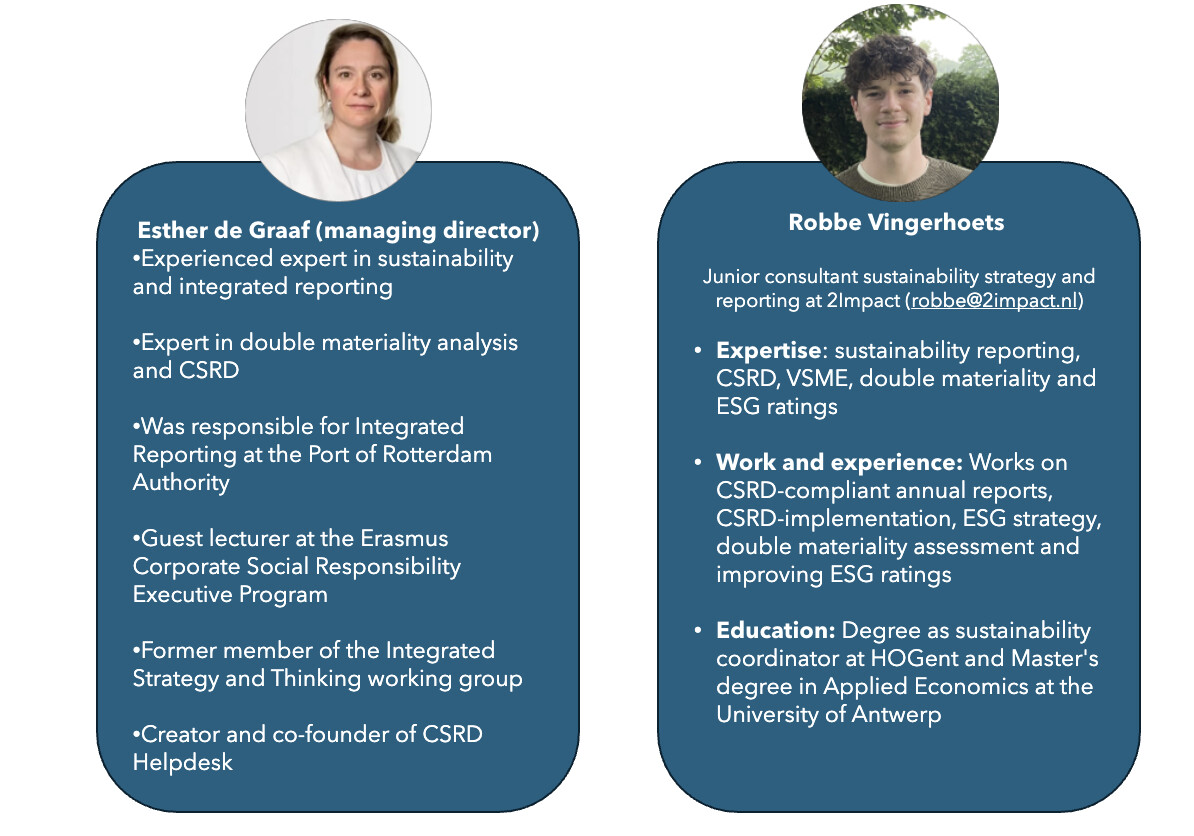Double materiality, introduced through the Corporate Sustainability Reporting Directive (CSRD), requires companies to assess and disclose not only how sustainability issues impact their financial performance ("outside-in"), but also how their activities affect people and the environment ("inside-out").
But double materiality is more than just a reporting requirement, it’s a strategic tool. A well-executed Double Materiality Assessment (DMA) helps organizations, both large and small, to identify and prioritize their most significant ESG topics, providing a strong foundation for developing or refining their ESG strategy.
Many organizations face challenges in implementing DMA in a practical, integrated way, especially when aligning it with existing risk management frameworks or broader ESG initiatives.
This training is designed to meet that need. It offers a clear, hands-on approach to understanding and applying double materiality, helping participants embed it effectively and leverage it to shape or update their ESG strategy.
What you will learn
- Understand the concept of double materiality.
- Gain detailed insight into the four key steps of a Double Materiality Assessment and how to engage relevant stakeholders.
- Learn practical methods to leverage your DMA in setting up your corporate (ESG) strategy.
Programme
- Setting the scene: Legal foundations of double materiality.
- Deep dive into financial and impact materiality – definitions, perspectives, and real-life examples.
- DMA in practice: Walkthrough of the 4-step DMA approach (Prepare – Identify – Assess – Prioritize).
- Interactive sessions: Stakeholder mapping, identifying and scoring IROs (Impacts, Risks, and Opportunities).
- From analysis to strategy: Translating the outcomes of the DMA to an ESG strategy.
Trainers



